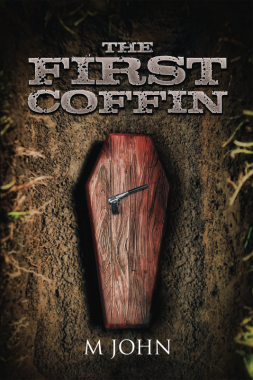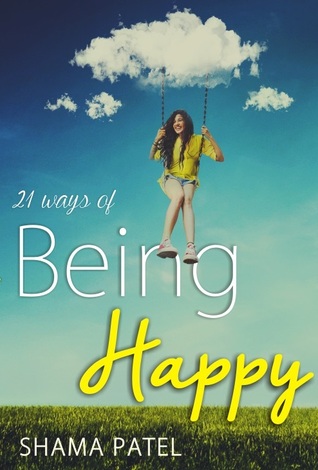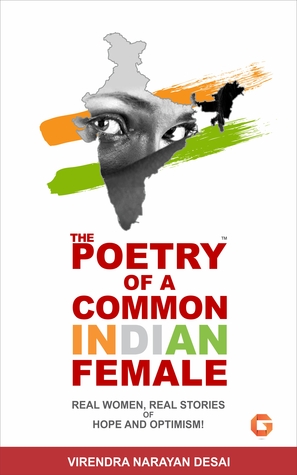About the book:
The Mumbai underworld is controlled by the Devgun family. When an upright and senior member of the Mumbai police stands up to them, the ‘family’ decides to send out a strong message, by killing not just him, but his whole family. They employ the services of a professional assassin, who does the job, but is unable to kill the police officer’s son, who was not with his family at that time. Because of this technicality, the Devgun family decides to withhold payment to the assassin.
The assassin is now out to collect his payment.
The son has come back, and is now, out seeking revenge.
The Mumbai police are pulling out all stops to solve the case, because the victim was one of their senior officers.
Will things ever be the same again?
About the author:
M John is a retired fighter pilot, with extensive flying experience on the MiG-21, and the Mirage-2000 aircraft. He has also been closely involved in other facets of the military, including Military Intelligence. After retiring from the Indian Air Force, he has written a number of articles on military matters which have been published in a few magazines. He has also taken part in Panel discussions on military matters, on TV. He is a self taught computer ‘enthusiast’, and has written an article on alternative operating systems, which was published in a computer magazine. He likes driving, and has driven practically all over India.
My Review:
In yet another milestone for the crime fiction/thriller scene in India comes a novel which brings a fresh story of the demise of an underworld family- "THE" underworld family is more like it.
I especially like the plot- it is driven by the singular most important and powerful emotion of revenge. Revenge is what provokes the Devgun Family to hire an unknown assassin, revenge is what brings them a powerful enemy in the form of the same assassin who is denied full payment, revenge in the actions of the son whose family was murdered by the assassin. And one twisted plot it is- the initial chapters set the background for the thrill that awaits the reader. However, till the time the assassin is hired and sets to work, the pace is slow. There is an introduction of the characters over the first few chapters, and while it serves well for the purpose of the plot, it was very difficult to remain glued. However, as the story unfolded and the secrets unraveled, I started liking it. The pace, after the killing, was just perfect, and the actions, one following the other were beautifully written in the plot.
The plot keeps you hooked. Another part - the characters- were so deftly etched. Brownie points for that too! The author went under the skin of the characters and it did the trick.
Again, the book was correctly paced, until, in the very end, it ended, and it seemed rather abrupt. Maybe I was enjoying it that I felt it ended too soon, or maybe it left a cliffhanger with scope for a sequel. One can never know. But, the time spent reading it was spent fruitfully.
Crime fiction has indeed arrived in India.
The Mumbai underworld is controlled by the Devgun family. When an upright and senior member of the Mumbai police stands up to them, the ‘family’ decides to send out a strong message, by killing not just him, but his whole family. They employ the services of a professional assassin, who does the job, but is unable to kill the police officer’s son, who was not with his family at that time. Because of this technicality, the Devgun family decides to withhold payment to the assassin.
The assassin is now out to collect his payment.
The son has come back, and is now, out seeking revenge.
The Mumbai police are pulling out all stops to solve the case, because the victim was one of their senior officers.
Will things ever be the same again?
About the author:
M John is a retired fighter pilot, with extensive flying experience on the MiG-21, and the Mirage-2000 aircraft. He has also been closely involved in other facets of the military, including Military Intelligence. After retiring from the Indian Air Force, he has written a number of articles on military matters which have been published in a few magazines. He has also taken part in Panel discussions on military matters, on TV. He is a self taught computer ‘enthusiast’, and has written an article on alternative operating systems, which was published in a computer magazine. He likes driving, and has driven practically all over India.
My Review:
In yet another milestone for the crime fiction/thriller scene in India comes a novel which brings a fresh story of the demise of an underworld family- "THE" underworld family is more like it.
I especially like the plot- it is driven by the singular most important and powerful emotion of revenge. Revenge is what provokes the Devgun Family to hire an unknown assassin, revenge is what brings them a powerful enemy in the form of the same assassin who is denied full payment, revenge in the actions of the son whose family was murdered by the assassin. And one twisted plot it is- the initial chapters set the background for the thrill that awaits the reader. However, till the time the assassin is hired and sets to work, the pace is slow. There is an introduction of the characters over the first few chapters, and while it serves well for the purpose of the plot, it was very difficult to remain glued. However, as the story unfolded and the secrets unraveled, I started liking it. The pace, after the killing, was just perfect, and the actions, one following the other were beautifully written in the plot.
The plot keeps you hooked. Another part - the characters- were so deftly etched. Brownie points for that too! The author went under the skin of the characters and it did the trick.
Again, the book was correctly paced, until, in the very end, it ended, and it seemed rather abrupt. Maybe I was enjoying it that I felt it ended too soon, or maybe it left a cliffhanger with scope for a sequel. One can never know. But, the time spent reading it was spent fruitfully.
Crime fiction has indeed arrived in India.
Buy Links:



















.jpg)


















